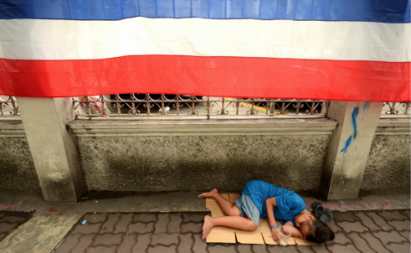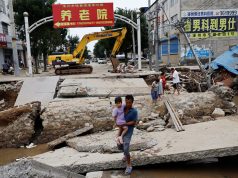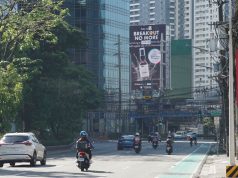Editor’s note: Cesar Polvorosa Jr. is a business school professor of economics, world geography, and international business in Canada. He is also a published writer in economics, business, and literature. This is a significantly revised and extended version of the article that originally appeared in The Canadian Business Strategist Magazine entitled Business Strategy in a New Era of Uncertainty. Part 1 of this article was posted 28 September 2014.
At the macroeconomics level these are just a few of the policies and strategies that the Philippines can adopt. These are not meant to be exhaustive nor detailed due to space constraints.
1. Flexibility in the Comparative Advantage Theory
The Comparative Advantage Theory argues that a country should specialize in the production of a product or service where it has relative cost advantages. It is the foundation of modern international trade but it is not the be-all and end-all of international economic relations especially as it assumes an open international trading system — which is not a guarantee in the Age of Uncertainty as well as uniform tariffs and trade regulations. A country needs to prioritize objectives of attaining food and national security as well as recognizing that comparative advantages are dynamic i.e. they change over time, and a country and its government can influence where its comparative advantages will be in the future.
A notable case is that of Japan’s rice production whose cost is higher than the average world price but it persists in growing rice to enhance its food self-sufficiency. This is directly relevant to the Philippines for if a trade blockade is imposed on the country or there is a major disaster that befalls the major supplier the country will be in turmoil if not literally starve. The objective of improving food self-sufficiency is practiced by many industrialized countries.
A Japan METI (Ministry of Economy, Trade and Industry) official noted that if Japan only followed the standard comparative advantage theory then the country would remain just a producer of silk. Nobel laureate Joseph Stiglitz noted that 40 years ago the comparative advantage of South Korea was in rice production. Instead, South Korea deliberately built up its military industrial complex since then as part of a comprehensive industrial policy and now the Philippines is purchasing its FA50s.
There is a dynamic comparative advantage i.e. the relative cost of resources change over time and therefore those comparative advantages of countries also change in the long term and can be shaped — though this is not a license to abuse the principles of comparative advantage. China’s comparative advantage was in very low cost labor but as their wages increased (40 percent up in recent years) it’s no longer highly labor intensive industries where they are competitive. They prepared for this day. China’s comparative advantage is shifting to higher value added services as there is a signal improvement in their skills, infrastructure, logistics, and supply chains. A new technology Chinese made passenger plane (Comac C919) will soon take off and Boeing anticipates that China will be a major competitor in the wide-body market in 10 years.
2. Strengthen and diversify political alliances and diplomatic initiatives
The Philippine armed forces are among the weakest in Southeast Asia which is now a critical issue as the country is being confronted by an increasingly belligerent and growing superpower. Even if the Philippines embarks on an ambitious military build-up, it will take several years to achieve a credible defense capability. The military capability upgrade is not only for external defense but it is also important to attain enhanced sealift and airlift capability to protect the overall interests of the country that includes the evacuation of Filipinos during times of natural calamities as well as overseas workers and nationals from crisis zones and providing supplies.
Forging closer diplomatic relations with other countries especially those with common interests in the freedom of navigation in the Asia-Pacific region strengthens the position of the country in negotiations as well as seeking out sources of support during times of crisis. In the Asia-Pacific region, closer relationships and cooperative agreements can be forged with Japan, Vietnam, Australia, Indonesia, and India. In the Middle East the emerging key player is Turkey. These diplomatic initiatives and alliances need to be deliberately programmed and strategized so that they are not construed as hostile and provocative while being an effective deterrent for the country to avoid being out-maneuvered and bullied by stronger powers.
3. Strengthen and diversify economic ties
A country also lessens its risks and mitigates economic vulnerabilities by diversifying its economic relationships. For the past decades the Philippines had been over-reliant on its economic relationships with the US and Japan. The country has underdeveloped economic ties with India, Latin America, Sub Sahara Africa, as well as Canada. The country needs to prepare itself for the post-Bretton Woods global economic landscape that is taking shape and often referred to as New Bretton Woods or Bretton Woods II. There may be opportunities in such initiatives as the New Development Bank being established by the BRIC countries by 2016 as it can complement IMF resources. Not only are the conditionalities of the New Development Bank expected to be less stringent than the IMF but its mere availability leverages the bargaining position of the Philippines as a borrower.
4. Strengthen and diversify the domestic economy
Likewise, a country can better withstand the volatilities in world markets and manage international geopolitical risks by strengthening and relying more on the domestic economy for its sources of growth and development. Whereas city-states such as Singapore and Hong Kong have no choice except to rely on international trade to expand their economies, the Philippines has a potentially big domestic market of 100 million. Strengthening the domestic economy does not mean neglecting exports but may require a more diversified export mix to spread out the risks of a down turn in demand among specific product lines and markets. Globalization is in fact under threat in the current era of uncertainty and it’s possible that we are past the peak of globalization. As the local economy develops, many OFWs will elect to stay or go home to the Philippines as they find jobs with local businesses that will also reverse the brain drain of previous years.
Inclusive growth as measured by jobs growth and declining inequality is not only vital for long term sustainable growth and progress but it also leads to greater social cohesion and national unity. The call for sacrifices that may take place during times of crisis is facilitated and support for the national agenda is easier to muster with national unity and cohesion.
5. Prudent macroeconomic management
The country’s sound and prudent macroeconomic management has resulted in stable fundamentals: manageable inflation and reasonable interest rates, gradually improving fiscal position and sustainable BOP even while the country has been achieving an annual average of 6 percent GDP growth since 2010. The country has achieved considerable progress in the stable foundation of the economy for its sustainable growth. The economy withstands the turbulence of a worsening economy with stable financials.
The cases of the US and Canada present interesting contrasts. The US by about 2001 had a budget surplus but that rapidly reversed with its massive expenditures in the Iraq and Afghanistan wars. With the advent of the financial meltdown of 2007-2008 it was already in a precarious fiscal position. In contrast, prudent Canadian fiscal management became a strength when it needed to jump-start the economy during the Great Recession.
At the cusp of structural change
The prolonged crisis arising from the financial meltdown of 2007-2008 has naturally led to the present malaise and even soul-searching among economists and policy makers worldwide about the effectiveness of the present capitalist system.
Why is it taking a long time to mitigate the high unemployment rate? Why is it difficult to restart the engine of the world economy? Can it be because of the drag of greater automation on employment? What will be the ultimate consequences of growing inequality?
These are some of the issues that will be investigated in future articles. It is now abundantly clear that the past half-decade was no mere cyclical downturn but that we may be undergoing the birth pangs of a New Order.
The world is at the cusp of structural transformation.
One critical lesson of history is the resiliency of economies and societies. The 1930s to 1940s were years of the Great Depression and the Second World War but these were followed by the boom years of the 1950s to 1960s. The tumultuous 1970s likewise became forgotten with the wealth of the 1980s and 1990s. We are in a new era of volatility and uncertainty in the wake of the Great Recession.
The best case forecast point to fragile global growth up to about 2020 laden with risks in the context of a highly fluid economic and political situation. It is not clear what the New Order will be though there are various scenarios including that we may simply indefinitely drift but history shows that stability and prosperity will eventually return. It is the strategic imperative for the Philippines and its enterprises to adapt to the dynamics of the environment to enhance long-term survival and achieve prosperity.










